Presbyopia: Your Comprehensive Guide
What You Need to Know About Presbyopia

Presbyopia is an extremely common condition that affects the eyes with age. Even if it hasn’t affected you yet, you have surely seen people who hold their newspaper or menu out at arms length in order to read it. This is a classic symptom of presbyopia, the inability to focus up close that develops with age. Presbyopia is impossible to avoid, but it is easy to treat when it does occur. By definition, presbyopia is an age-related vision disorder that affects the ability to focus on close up objects, due to the aging and hardening of the eye’s lens. The lens thickens with age and loses the ability to focus in the same ways that it was able to when it was younger. The muscle fibers surrounding the lens also lose flexibility, and this is thought to contribute to the loss of vision as well.
Presbyopia symptoms include:
- The need to hold objects, such as reading material, at an arms length to read clearly. In more advanced cases, an arms length may not even be far enough to allow for clear vision
- Trouble focusing on close up objects, when this was never a problem in the past
- Eye strain may occur in sufferers of presbyopia
- Headaches may also occur is presbyopia sufferers
How To Manage Presbyopia:
While there is no one size fits all cure for presbyopia, there are several treatment options available. It is important to discuss all options with your eye doctor at Bay Eye Center to select the option that is best for your eyes. Everyone is different. Treatment options include reading glasses, eyeglasses for all day wear, contact lenses, and surgery.
Presbyopia Treatment Options:
- Reading glasses: Reading glasses can be purchased at a drug store or recommended by your eye care professional. These glasses are worn only when up close vision is needed, such as for reading or hobby work. They provide a “quick fix” by allowing you to focus up close only when you need to.
- Prescription eyeglasses: Bifocal, multifocal, and progressive lens eyeglasses are all options for those who suffer from presbyopia. These eyeglasses have several points of focus, allowing the wearer to focus on objects both close up and far away with increased accuracy.
- Contact lenses: Contact lenses also come in multifocal options, allowing the wearer to focus on both up close and far away objects.
- Monovision: Another option is monovision, in which the eyes wear different prescriptions, one for up close and another for distance. The brain adapts to this difference in vision strengths and learns which eye to favor for distance and close up vision. This is an option for eyeglasses and contact lenses.
- Surgery: There are several surgical options to correct presbyopia. Refractive lens exchange surgery replaces the eye’s lens with an artificial lens, much like cataract surgery. Monovision LASIK, on the other hand, corrects the vision in one eye to allow for improved distance vision while the weaker eye is left to focus on close up vision. There is also the Kamra corneal inlay, which is implanted in the cornea and sharpens vision with a pinhole effect, much like looking through a telescope.
If you think that you may be suffering from presbyopia, the experienced optometrists at Bay Eye Center can discuss the best options for you moving forward. Whether it be reading glasses, multifocal eyeglasses, contact lenses, or surgery, there are plenty of options to treat presbyopia.
Contact Bay Eye Center Today
See the world in a new light! Contact any of our 6 Bay Eye Center locations today for exceptional eye care and personalized service. Every time.
Contact Bay Eye Center Today
See the world in a new light! Contact any of our 6 Bay Eye Center locations today for exceptional eye care and personalized service. Every time.
MANSFIELD OFFICE
1 North Main Street
Mansfield, MA 02048
Phone: (508) 339-7600
Hours:
Monday: 11 am – 7 pm
Tuesday: 9 am – 5 pm
Wednesday: 11 am – 7 pm
Thursday: 9 am – 5 pm
Friday: 9 am – 5 pm
Saturday: 8 am – 2 pm
Sunday: Closed
PLYMOUTH OFFICE
67 Obery Street
Plymouth, MA 02360
Phone: (508) 466-5628
Hours:
Monday: 9 am – 5 pm
Tuesday: 9 am – 5 pm
Wednesday: 9 am – 7 pm
Thursday: 9 am – 5 pm
Friday: Closed
Saturday: 8 am – 2 pm
Sunday: Closed
BRIDGEWATER OFFICE
54 Broad St
Bridgewater, MA 02324
Phone: (508) 697-8001
Hours:
Monday: 9 am – 5 pm
Tuesday: Closed
Wednesday: 11 am – 7 pm
Thursday: 9 am – 5 pm
Friday: 9 am – 5 pm
Saturday: 8 am – 2 pm
Sunday: Closed
EASTON OFFICE
20 Roche Brothers Way
North Easton, MA 02356
Phone: (508) 238-5200
Hours:
Monday: 10 am – 6 pm
Tuesday: Closed
Wednesday: 10 am – 6 pm
Thursday: 10 am – 6 pm
Friday: 9 am – 5 pm
Saturday: 8 am – 2 pm
Sunday: Closed
CEDARVILLE OFFICE
2277 State Rd, Unit F
Plymouth, MA 02360
Phone: (508) 888-6393
Hours:
Monday: 9 am – 5 pm
Tuesday: 9 am – 5 pm
Wednesday: 9 am – 5 pm
Thursday: 9 am – 5 pm
Friday: 9 am – 5 pm
Saturday: Closed
Sunday: Closed
DUXBURY OFFICE
27 Railroad Ave
Duxbury, MA 02332
Phone: (781) 934-6945
Hours:
Monday: 11 am – 7 pm
Tuesday: 9 am – 5 pm
Wednesday: Closed
Thursday: 9 am – 5 pm
Friday: 9 am – 5 pm
Saturday: 8 am – 2 pm
Sunday: Closed

All Rights Reserved | Bay Eye Center

All Rights Reserved
Bay Eye Center
